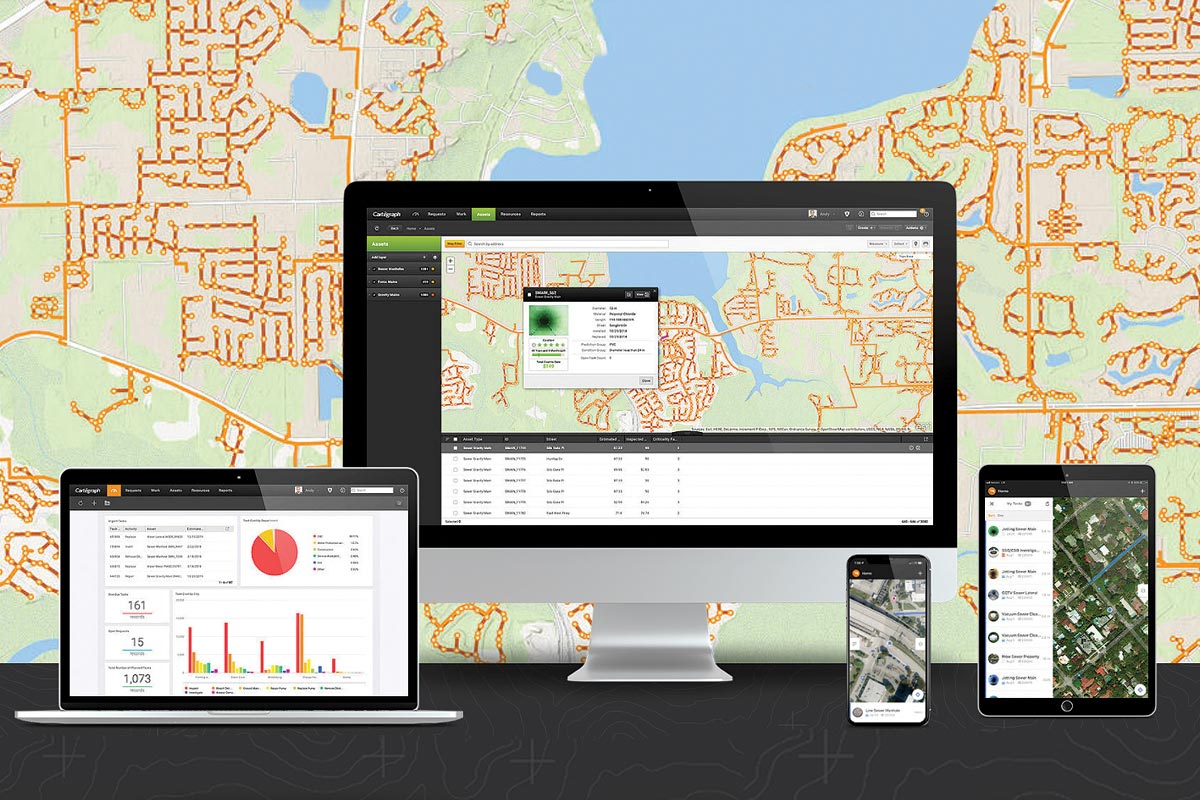
How To Securely Store your Condition Assessment Data
The digital age has transformed how industries operate, ushering in an era of data-driven decision making. The infrastructure sector, like many others, increasingly relies on vast amounts of data to optimize operations and improve outcomes.
As cities and service providers invest heavily in condition assessment programs, they are generating a goldmine of valuable data. But as the volume of collected data grows, so does the responsibility to protect and secure it.
Traditionally, condition assessment data has been stored on physical devices like thumb drives and on-premises servers, often leading to disorganized and inaccessible archives. This approach not only hampers data analysis but also poses significant security risks.
Cloud-based solutions typically offer a more efficient and secure alternative. By migrating data to the cloud, organizations can centralize storage, enhance accessibility and implement robust security measures.
Cloud storage also provides easy access to data from anywhere with an internet connection across a variety of devices, including desktops, smartphones, tablets, and laptops, enhancing collaboration and productivity.
Safeguarding Your Data: The Cloud Advantage
Cloud-based data storage offers a multi-layered and secure solution for organizations of all sizes. By leveraging advanced security measures, such an encryption and firewalls, reputable cloud providers safeguard sensitive data from potential threats like hacking and ransomware. Cloud providers often implement automated backup and disaster recovery procedures, enduring data redundancy and minimizing the risk of data loss.
Cloud providers often have dedicated teams and advanced security tools to protect data and reduce the risk of cyberattacks, which may not be feasible for smaller organizations to maintain in-house.
Evaluate Your Organization’s Specific Needs
Before selecting a cloud service provider, it is crucial to conduct a comprehensive assessment of your organization’s unique requirements, including.
- Identifying the volume and types of data you will be storing, as well as your organization’s data retention policies and compliance regulations.
- Collaborating with your IT experts to ensure the chosen solution aligns with your organization’s existing infrastructure and security protocols.
- Evaluating your future growth and peak usage requirements to select a provider that can accommodate your evolving needs.
- Choosing a solution that fits within your organization’s budget while meeting your storage and management requirements.
Choosing the Right Cloud Provider
Selecting the ideal cloud service provider will help to ensure the security, reliability, and scalability of your CCTV data.
Choose a provider that partners with reputable cloud platforms like Amazon Web Services (AWS), Microsoft Azure and Google Cloud Platform (GCP) and compare their strengths and weaknesses, considering factors such as:
- Security Certifications: Look for certifications like ISO 27001 and SOC 1, SOC 2 (system and organization controls)
- Data Center Locations: Choose a provider with data centers in your home region to comply with data sovereignty regulations and industry standards. Data centers are also physically secure, with controlled access, surveillance and environmental controls.
- Service Level Agreements (SLAs): These contracts define metrics such as uptime, response time, and performance standards.
- Additional Security Measures: Prioritize cloud providers with a multi-layered security approach like two-factor authentication, single sign-on (SSO), firewalls, encryption and strict access controls.
Having transparent communication with prospective cloud providers regarding their security measures and network connectivity capabilities is crucial. Organizations should ask specific questions about the provider’s security protocols, incident response plans, and data backup and recovery procedures.
Inquiring about their network infrastructure, redundancy measures and SLAs can help assess their ability to provide reliable and secure services.
Challenges of Non-Cloud-Based Platforms
Traditional data storage platforms like servers can present several potential issues. These on-premise solutions often require significant upfront investments in hardware, software and infrastructure, making them costly to implement. Additionally, managing and maintaining the equipment demands dedicated IT staff, raising operational costs.
On-premise storage, including servers and external drives, can pose significant challenges for infrastructure management teams. These systems are often vulnerable to security risks like data breaches, which can compromise critical data. On-premise storage also typically restricts access to specific locations or devices, limiting the ability of field crews, engineers, and administrators to collaborate effectively.
In an industry where real-time data sharing and remote access are essential for managing dispersed assets and responding quickly to issues, this lack of flexibility can significantly hinder operations. Transitioning to cloud-based solutions can help organizations overcome these challenges by offering increased security, improved adaptability, and enhanced scalability.
Key Factors to Ensure Smooth Data Migration
As infrastructure professionals consider moving to cloud-based solutions, several factors should be evaluated to ensure a smooth and secure migration, including:
- Connectivity: Reliable and high-speed internet access is essential for optimal cloud performance.
Workflow Optimization: By automating workflows and integrating cloud-based tools, organizations can streamline processes and simplify operations. - Data Consolidation: By consolidating data silos from various sources, such as cleaning programs, CCTV systems, hydraulic modeling, inspection crews, and contractor data, into a unified cloud-based platform, organizations can enhance data accessibility, analysis, and decision-making.
By carefully considering these factors and selecting a reputable provider, infrastructure professionals can reap the advantages of cloud-based solutions to maximize efficiency.
Securing Your Future with Cloud Technology
In our decades of experience in managing desktop and cloud-based systems, the WinCan team understands that careful planning and consideration are essential for successful cloud migration. With thoughtful research and strategic foresight, organizations can make informed decisions and ensure a smooth transition to the cloud.
Mike Russin is general manager at WinCan.




